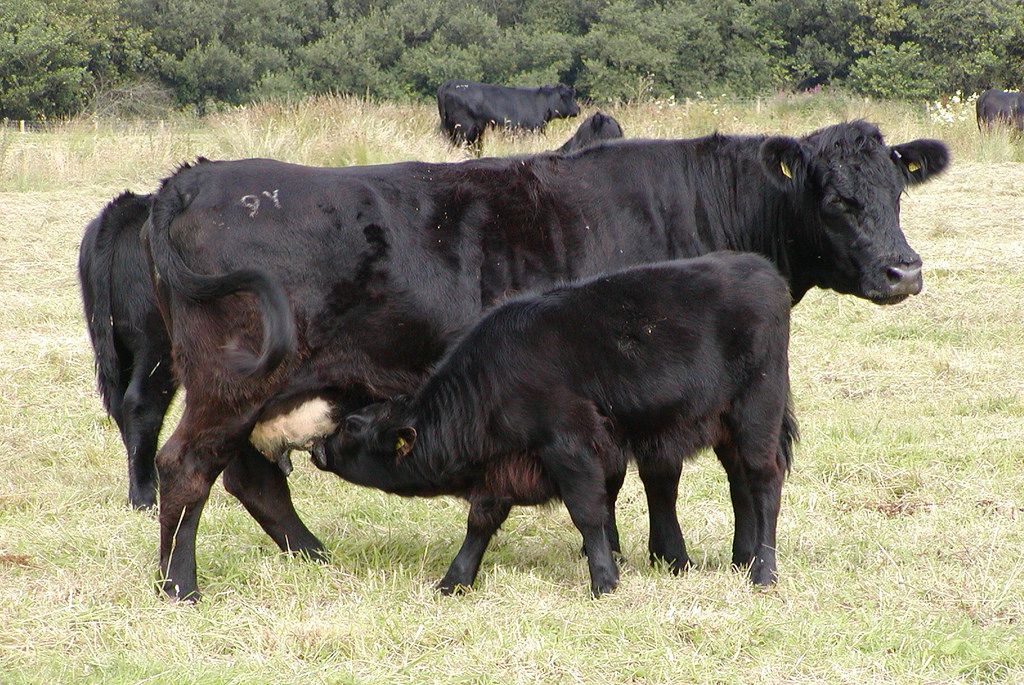
RARE BREEDS TRUST OF AUSTRALIA
powered by TidyHQCattle : WELSH BLACK
Cattle : WELSH BLACK
Country of origin: Wales, British Isles. 
Australian Status: ENDANGERED
International status: Rare globally. Small populations found in Wales, Germany, NZ, Australia, Canada.
Arrived in Australia: 1984.
Australian Population: 55 cows (2019/2020 estimate). 2022: 184 cows. Thank you to the Welsh Black Cattle Society of Australia for providing census figures.
Distribution:
History: From old Welsh breeds going back to pre-Roman and pre-Christian times, referred to by Romans as the Celtic ox. The only native cattle breed of Wales, intrinsic to its history.
Those called Castle Martins were the black cattle of Carmarthenshire, and known as a breed of hardy, wiry, small cattle, roaming the hills and mountains of West Wake in the severest winter weather.
Once called 'the black gold from the Welsh hills' as driven to English markets they sold for excellent money. Going home however the Welsh cattlemen were often robbed - this gave rise to The Bank of the Black Ox, a Welsh banking service - with a black ox on its banknotes, the bank bought out in 1909 by Lloyds Bank which was the end of independent banking in Wales.!
Breed Traits: Black, occasionally a bit of white on the underside. Sometimes a bit of rusty colour in the coat. Usually rusty colour to tail tassle. Very hardy. A thick long coat suited to wintering out in cold climates, often richly curled, yet which goes sleek and fine, shiny, in hot climates and in summer. Long in the back. Thrive on rough grazing. Great for conservation grazing programs as their grazing to different heights leaves habitat and plant species.
Most are horned, usually de-horned on farm. If left, the horns are white with black tips, facing out with the tips curving forward. In ancient times deadly to predators. They are naturally a placid, good natured breed and easily handled.
A large pelvic arch gives easy calving combined with the cow's ability to open their reproductive trait wide at calving. As well as easy calving, famous for being wonderful mothers. Fast maturing, heifers cycling under a year old. Fast growing.
Once dual purpose they are now mostly grown for meat, but the long lactation of 9 to 11 months and good milk supply ensures a healthy fast growing calf. The milk is high in butterfat being 4.2%. Makes tremendous butter. Popular to cross with other breeds to improve calving ease, milk and mothering, resulting in a fast growing animal of hybrid vigour that is a prime beef animal. Put to a white Shorthorn bull, the calves were mostly always blue-grey in colouring and once regarded as the finest of beef.
A quiet friendly nature. Hardy black hooves. A long lived breed, cows in their prime in their mid-teens and still calving at 20. Bulls are very fertile, reaching puberty early, and no bad weather deters them. Bulls weigh 950 to 1,100 kilos. They are a great walkers and good on hills, no country will deter a bull from his work or a cow from sourcing feed. This breed is the fastest growing and maturing of all the British breeds. They finish well off pasture and also off feedlots.
Healthy eating indeed - with very little back fat they are the leanest of the British breeds, maximum muscle and least fat, yet the meat is marbled for flavour. Known for its full flavour it has always been sought after beef.
Organisation: Australian Welsh Black Society
In Wales, UK - The Welsh Black Cattle Society http://www.welshblackcattlesociety.com/.
Additional Notes:
Photo : Welsh Black cattle on the National Botanic Garden of Wales, by Charles Stirton, Flickr.
Page by Janet Lane

